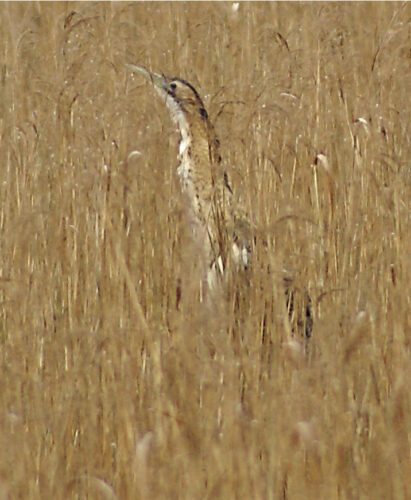
Blueberries in Eastern Siberia from Wikimedia Commons
Wild Blueberries
You’ll ask: And where are the wild blueberries?
and the shrill octave C flute notes?
And the Sunday afternoon lessons
words by these dragonflies: Leave! Get out!
I’ll tell you the story.
It was the beginning of autumn,
a scalpelling of white bone lichen
and bones full of mud the colour of damp irises
all these surrealist collages
glued to canvas, newspaper clippings.
Crizzled azure sea glass.
Then one day fleeing his fists,
these streets, carrying these bags.
One day this was the city of the unspoken
all those stone houses as they watched as I
bore the moon’s night side. And those
who swaddled it in a yellow sickle caul.
Look at all those who dwelled there.
Look at my buried placentas.
And you’ll ask why ekphrasis
speaks as one of fracture.
A stilled world, living in frames?
In the long galleries
etch in aquatint a madder red.
Wild blueberry rhizomes that
resembled old coffins. The barrens.

Great Bittern at Minsmere via Wikimedia (flickr user putneymark)
Skin
Sometimes, can you explain to a bittern what war is? Now it gets closer as if it has a secret to tell. Clucks and booms: Huu bwong. Unk-er-lunk. Huu huu huu huu. Sometimes, for a while you feel free. Then you hear teacher’s voice: “Ilka, come and sit back here on this bench!” These bog lands you can’t understand. These watercolour paintings of Pirka Wood. Walled nunnery orchard. Rye fields. Marshes and reed grasses. Heather moorlands. The cotton rag paper, wrinkled from water, as if the surface was the skin. The goat hair brushes. Over the years, you withdraw. You get smaller, you lose fairy tales. Sometimes, can you explain to a bittern what a song is? Why you play marbles. Pig-tailed nine year old. Sometimes, you can’t understand why fourth grade teacher is touching you. Why blue horses come in your dreams. That snort and nicker and goad the rains. Wet poplar leaves in a bomb crater. A waning sickle moon. The creek. Why you are afraid to tell your mother. The thin paper.

School photograph of Ilona in Schwabelweiss, Bavaria, 1949,
photographer unknown – Photo from the family archives
Edgar Ende’s Cloth With Swallow (1946)
i.
A long-lost myth, half-remembered
animal motif and architectonic fragment
these images of darkroom sketches
these epochs of distortion.
Dream-like visions
fighting it out in the ooze.
You pour gesso and let it fall across.
ii.
Skittering off every canvas
past the dogs, past the boars,
the foxes, the lizards
past giant sculptures
biomorphic shapes
you call yourself a surrealist.
A flat plane devoid of texture
death themes, clumsy, naïve.
The figurative alienated.
iii.
This swallow voice.
Small misshapen swallow.
iv.
This is the barbed wire of the ghetto
all those killed by war
all those tortured
flanked by high brick walls
these painters
their degenerate art.
v.
They say: Burn it!
You say: Auction them!
vi.
There is the rustle of the river reed
there is the evening sun.
There is the village,
your barren fruit trees.








